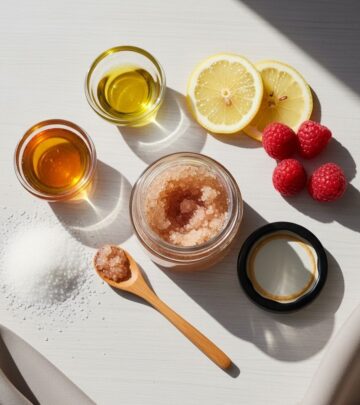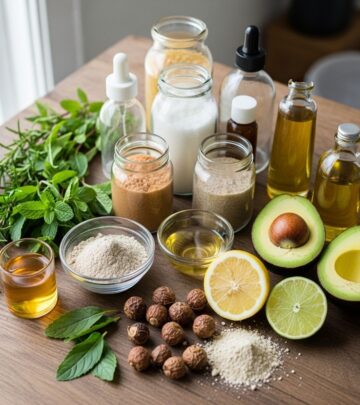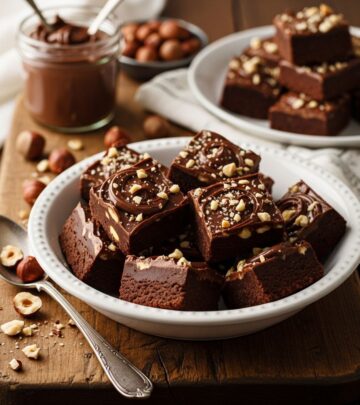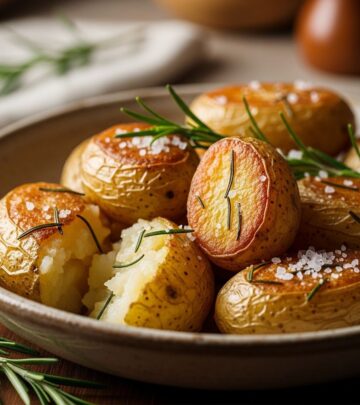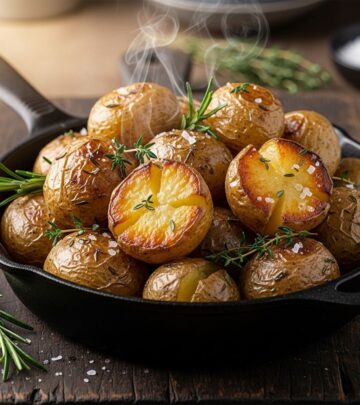Quick and Easy Homemade Cottage Cheese Recipe
Get rich, creamy curds in no time using ingredients you already have.

Image: HearthJunction Design Team
Homemade Cottage Cheese: Quick, Fresh, and Flavorful
Cottage cheese is a versatile dairy delight appreciated for its mild flavor and creamy, slightly tangy texture. Making cottage cheese from scratch isn’t just simple—it’s also surprisingly quick, requiring only three everyday ingredients and a handful of easy steps. Whether you’re seeking a better alternative to store-bought varieties or just want to explore homemade dairy, this recipe delivers fresh cottage cheese in less than half an hour.
Why Make Cottage Cheese at Home?
- Freshness: Enjoy the unparalleled taste and texture of fresh-made cheese.
- Control: Customize saltiness and creaminess to your taste and dietary needs.
- Simplicity: Only milk, vinegar, and salt needed—no special equipment or rare ingredients.
- Economical: Budget-friendly, using inexpensive pantry staples.
Ingredients and Equipment
The beauty of this recipe lies in its simplicity. You only need:
- Milk: Use whole milk for creamier curds; reduced-fat milk also works, but expect a firmer texture.
- White Vinegar: Lemon juice may also be used as an acidic alternative for curdling.
- Salt: For seasoning and flavor balance, adjust to taste.
Essential equipment: A large saucepan, a slotted spoon, cheesecloth or a fine-mesh sieve, and a mixing bowl.
Step-By-Step Preparation
1. Heat the Milk
Pour the milk into a large saucepan and slowly heat over medium flame. Stir gently and often to prevent scorching. Target temperature is hot—not boiling—typically around 120–130°F (49–54°C).
2. Add the Acid
Once the milk is hot, remove it from the heat. Stir in the vinegar (or lemon juice) slowly. You’ll notice the milk beginning to separate into curds and whey within a minute or two.
- Tip: Stir in a gentle, steady motion to encourage curd formation without breaking up the curds too much.
3. Let the Curds Form
Allow the mixture to sit, undisturbed, for 5–10 minutes. This gives the acid time to fully separate the curds (solid) from the whey (liquid).
4. Strain the Curds
Line a sieve or colander with cheesecloth and set it over a large bowl. Carefully ladle the curds into the cloth, letting the whey drain away. Gather the edges of the cheesecloth and gently squeeze to remove more liquid, depending on how moist you like your cottage cheese.
5. Rinse (Optional)
For a milder flavor and cooler curds, rinse the cheese under cold water while still in the cheesecloth, carefully separating the curds with your fingers.
6. Season and Finish
Transfer the drained curds to a bowl and sprinkle with salt to taste. For extra creaminess, stir in a spoonful of cream or milk. Your cottage cheese is now ready!
Nutritional Profile
Cottage cheese is a standout source of protein and contains essential nutrients like calcium and B vitamins, making it a wholesome choice for any meal.
| Nutrient (per 1/2 cup serving) | Approximate Amount |
|---|---|
| Calories | 100–120 |
| Protein | 11–14g |
| Fat | 4–6g (varies with milk type) |
| Carbohydrates | 2–3g |
| Calcium | 100–120mg |
Serving Suggestions
Homemade cottage cheese is incredibly versatile. Try these serving ideas:
- Breakfast: Dollop over toast, oatmeal, or atop pancakes and waffles.
- Fresh Fruit: Serve alongside berries, peach slices, pineapple, or melon.
- Savory Bowls: Mix with chopped chives, tomatoes, or cucumbers for a light snack or lunch.
- Bakes: Use as an ingredient in lasagna, casseroles, or savory pies.
- Dips & Spreads: Blend with herbs and seasonings for a tasty cracker dip.
Tips for Perfect Cottage Cheese
- Milk matters: Use full-fat milk for richer, creamier curds.
- Acid : Adjust the amount of vinegar or lemon juice to fine-tune curd size and tanginess.
- Drainage: The longer you drain, the drier your cottage cheese. For creamier cheese, drain less and add a dash of cream at the end.
- Storage: Store cottage cheese in an airtight container in the refrigerator for up to 3–5 days.
Recipe Variations and Add-Ins
- Fresh Herbs: Stir in chives, dill, or parsley for enhanced flavor.
- Spices: Try freshly cracked black pepper or a pinch of smoked paprika.
- Fruit: Blend in peaches, pineapple, or berries for a sweet twist.
- Vegetables: Add finely chopped tomatoes or cucumbers for a crunchy, savory side.
Troubleshooting & FAQ
Q: Why aren’t my curds forming?
A: Ensure your milk is hot enough, but not boiling. Insufficient acidity or low temperature can prevent curdling. Increase the amount of vinegar or gently reheat if necessary.
Q: Can I use non-dairy milk?
A: Traditional cottage cheese requires dairy milk due to its protein content, which reacts with acid. Most plant milks lack the casein protein necessary for curd formation.
Q: Is cottage cheese the same as ricotta?
A: No. While both are fresh cheeses, ricotta is made from whey and is softer, with a finer texture. Cottage cheese consists of larger curds and is made by curdling milk directly.
Q: Can I use lemon juice instead of vinegar?
A: Yes, lemon juice can substitute for vinegar. It adds a gentle citrus note and works equally well to curdle the milk.
Q: How should I store homemade cottage cheese?
A: Store in an airtight container in the refrigerator. For best taste and texture, enjoy within 3–5 days.
Creative Ways to Use Cottage Cheese
- Bake into casseroles: Add moisture and a creamy bite to dishes like baked ziti or vegetable gratins.
- Pancake or Waffle batter: Boost protein and tenderness by adding cottage cheese to your morning batter.
- Scrambled Eggs: Stir in a spoonful for a richer, fluffier texture and extra protein.
- Lasagna layer: Substitute for ricotta to lighten up classic lasagna without sacrificing flavor.
- Dips: Whip with herbs, lemon juice, and black pepper for a nutritious, tangy veggie dip.
Nutrition and Dietary Benefits
- High-protein: Satisfying and supportive of muscle maintenance and repair.
- Low-calorie: Makes an excellent choice for calorie-conscious eaters.
- Calcium-rich: Supports bone health.
- Low in carbohydrates: Fits easily into low-carb lifestyles.
Safety and Storage Tips
- Use pasteurized milk: For food safety, especially when preparing for children or those with compromised immune systems.
- Keep chilled: Always refrigerate promptly and discard if you notice a sour smell, off taste, or visible mold.
Frequently Asked Questions (FAQs)
Q: Can I double or triple the recipe?
A: Yes, simply scale the ingredients accordingly. The preparation method and times remain largely the same, though curd formation may take slightly longer in larger batches.
Q: Why rinse cottage cheese curds?
A: Rinsing removes some tang and cools the curds quickly, resulting in a milder flavor and firmer texture. You can skip this step for a richer, tangier finish.
Q: How do I make my cottage cheese creamier?
A: Add a spoonful of milk or cream after draining for extra richness and a classic creamy texture.
Q: What can I do with leftover whey?
A: Use leftover whey in baking bread, blending into smoothies, watering plants, or as a marinade base. It’s high in protein and nutrients.
Tried-and-True Recipe Tips
- Stir curds gently to avoid breaking them—large curds offer traditional cottage cheese appeal.
- Test seasoning and adjust salt only after rinsing and finishing the cheese.
- Add fresh cream to achieve store-bought style, creamy results, if desired.
Conclusion
Homemade cottage cheese is a testament to how easy, fresh, and satisfying do-it-yourself dairy can be. With basic kitchen tools, a handful of everyday ingredients, and less than 30 minutes, you’ll have a bowl of creamy, flavorful cottage cheese ready to enjoy alone or as part of countless recipes. Once you experience the taste and quality of fresh cheese, you might never return to the store-bought variety again.
References
- https://www.allrecipes.com/recipe/241160/creamy-cottage-cheese-scrambled-eggs/
- https://www.allrecipes.com/recipe/254658/cottage-cheese/
- https://www.scribd.com/document/766963070/Allrecipes-com-Recipe-254658-Cottage-cheese-Print
- https://www.allrecipes.com/recipe/237567/cottage-cheese-bake/
- https://www.allrecipes.com/recipes/16110/ingredients/dairy/cheese/cottage-cheese/
Read full bio of medha deb


